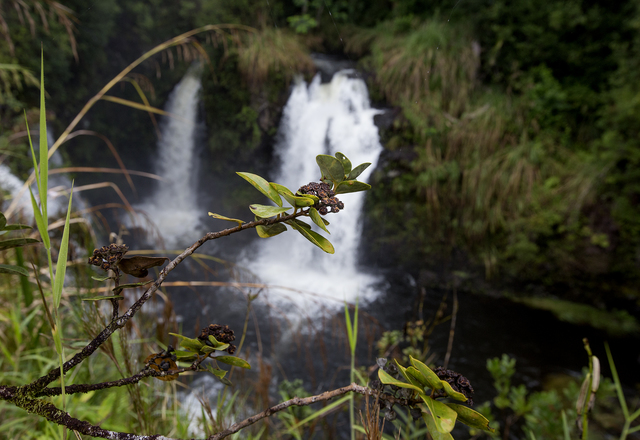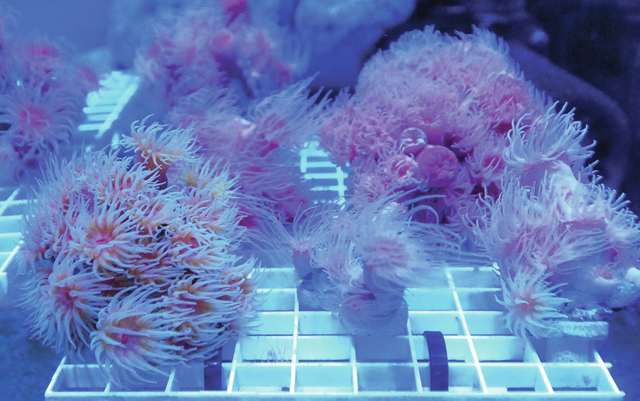World Conservation Congress could benefit Big Island species
It takes place every four years, brings together thousands of representatives from around the world and features some of the biggest names in the field.
ADVERTISING
No, it’s not the Olympics.
It’s the International Union for Conservation of Nature World Conservation Congress. The 10-day event began Thursday in Honolulu and continues until Sept. 10. Speakers include everyone from Jane Goodall to Prince Albert II of Monaco.
The director general of UNESCO and the secretary-general of the Convention on International Trade of Endangered Species of Wild Fauna and Flora also will attend. Actions at previous IUCN gatherings led to the creation of CITES.
President Barack Obama was not one of the conference speakers, but Wednesday night he met with heads of state from Pacific Island nations who are attending the event during his one-day stay in Honolulu. The conference comes on the heels of the President’s expansion of Papahanaumokuakea National Monument.
This is the first time in the WCC’s nearly 70-year history the event has been hosted in the United States.
“It took a lot of hands and a lot of hearts to convince UNESCO that Hawaii would be the model for the world for the conservation of our species and our oceans,” said Cindy Orlando, park superintendent at Hawaii Volcanoes National Park.
Although the main conference is on Oahu, the park will receive plenty of international visitors in the next week. It is hosting members of the Korean National Park Service as well as a delegation from China representing Hawaii Volcanoes’ sister park, Wudalianchi. A group from a French sister park, La Réunion, also will visit.
Jon Price, chairman of the Geography and Environmental Science Department at the University of Hawaii at Hilo, said several of his students are planning to attend the conference, some as volunteers.
“It’s going to be a good chance to interface with people from other countries, where they’re taking different kinds of things in terms of trying to engage in conservation,” he said. “In some cases, these are developing countries that maybe don’t have a lot of resources at their disposal, and they’re trying to preserve and promote their economies at the same time. And, of course, we have those struggles here in Hawaii as well.”
Price is attending the conference for at least two days, wearing two different hats: one as a scientist and another as a member of the State Natural Area Reserves Commission.
“It’s much larger than your typical scientific conference,” he said. “We have a number of high-profile policymakers attending. It really is functioning a little more like a United Nations meeting, with respect to conservation.”
Because it follows last year’s United Nations Sustainable Development Summit and the Paris climate agreement, the IUCN describes the conference as a “major opportunity to start deciding how to put those deals into action.”
Topics to be discussed span issues from around the globe, but one of the hundreds to be considered is genetic rescue of endangered or near-extinct species. That’s one that could impact the future of Hawaii Island’s ohia trees, currently under threat from rapid ohia death, though it is a “somewhat controversial topic,” said Christy Martin, public information officer for the Coordinating Group on Alien Pest Species.
Recent advances in gene editing, particularly the CRISPR-Cas9 technique co-developed by former Hilo resident Jennifer Doudna, mean conversations about how to save species are changing.
Martin cited the example of the American chestnut, which was nearly wiped off the mainland because of a fungus. Researchers inserted a wheat gene that is resistant to the fungus into the chestnut.
“Where there were almost no North American chestnuts left, now they’re thinking about, ‘Well, what if we can bring it back,’” Martin said. “That was 100 years in the making, so now’s a good time to bring it up and start talking about it (for other species).
“It’s at that point where we need to catch up as a society and make those decisions,” she said.
Gene rescue also will be discussed through the lens of native Hawaiian bird species.
Hawaii’s selection as host for the IUCN World Conservation Congress makes sense, Price said, because “we’re sort of a microcosm of the world in some ways.”
“We’re remote, a small place,” he said. “But we have these large environmental issues, from coral reefs to invasive species and these things that really do impact people’s lives.”
Martin agreed.
On an island, “You stand in one place, and you can see all the way from the top of the watershed to the edge of the reef,” she said. “When people come from a continental perspective, that’s really hard to think about … the benefits an island has to offer is this perspective that we are all connected.”
For more information visit www.iucnworldconservationcongress.org/.
Email Ivy Ashe at iashe@hawaiitribune-herald.com.




